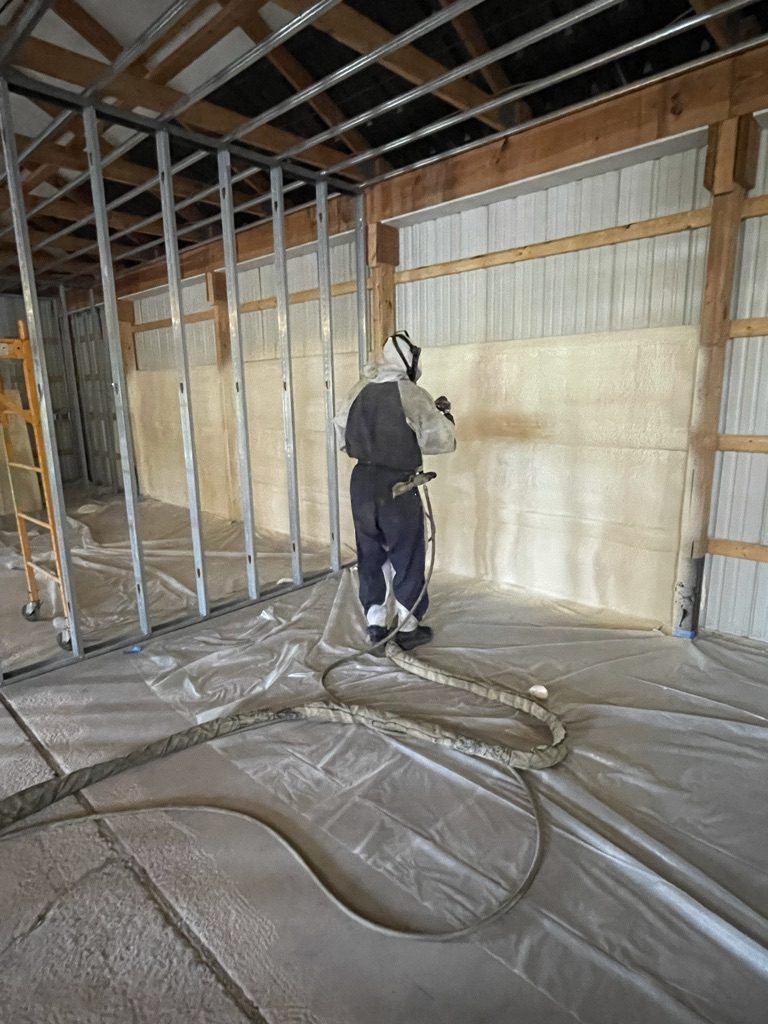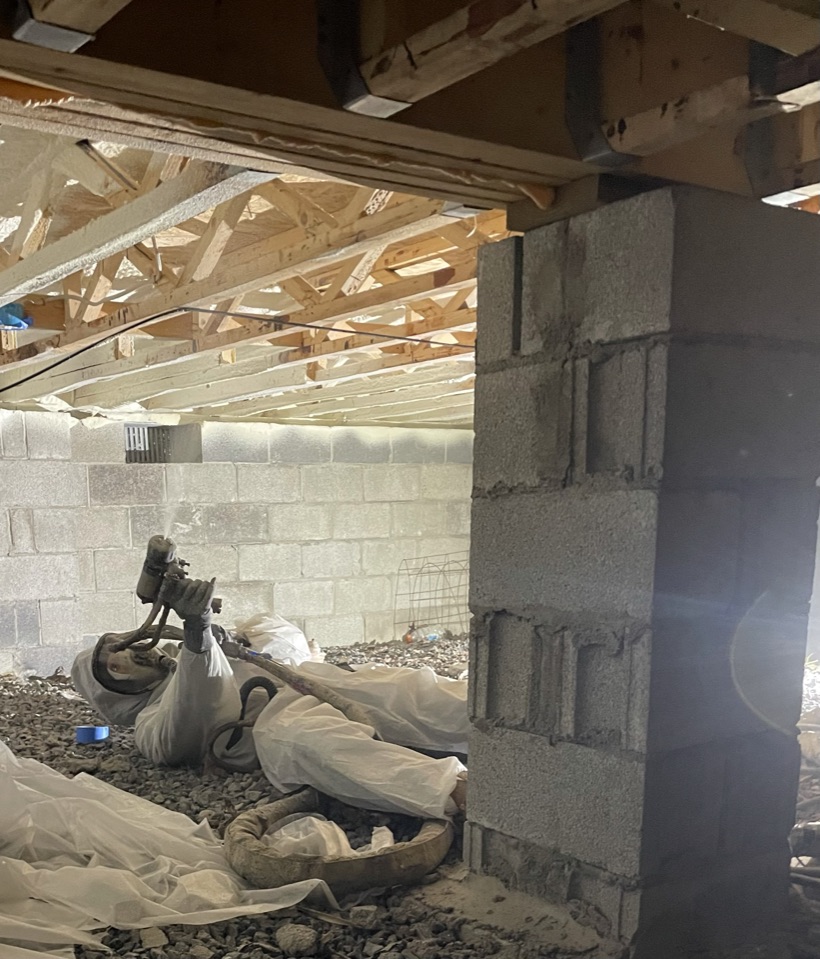Spray Foam Insulation
Spray foam may be used for projects with different purposes or goals. Spray foam can be applied to crawlspaces, exterior walls and attic as well. Applying spray foam will reduce the amount of uncontrolled air movement throughout the structure helping to reduce drafts, wasted energy and comfort issues.


Why Spray Polyurethane Foam?
Sealing a dwelling or structure with spray foam creates the greatest opportunities reduce air leaks and prevents drafts from windows, doors and other bypasses found in the home. Additionally, having a tightly sealed structure reduces dust and pollutants, Insects and critters and even reduces sound transmission.
Simultaneously Seal & Insulate
Improves Indoor Air Quality
Able to Insulate Hard to Reach Areas
Increases Structural Integrity
- Vented Attic
- Un-vented Attic
- Fire Retardant
- Quality and Efficiency
Insulating your attic with spray foam insulation is an effective way to improving the energy efficiency, health & safety and comfort in your home or building. As we have worked in attics for many years, we still find that the number one problem in attics is the amount of air that is able to escape into the attic space from unsealed attic bypasses. Attic bypasses consist of plumbing penetrations, electrical penetrations, unsealed bearing and partition wall top plates, leaky duct boot penetrations and drop soffits just to name a few.
Attics are generally in one of two conditions, vented or non-vented. The most common condition is a vented attic. Vented attics are attics that have means for outside air, such as soffit vents, roof vents, gable vent and ridge vents to enter the attic space. (Learn more about vents here). Typically builders are required to add a certain amount of net free venting to the attic space. Additionally, builders are required to add insulation with a particular R-value in the attic space. These requirements are determined by your local code or municipality. The most common choice for builders is fiberglass insulation placed on floor of the attic. This has been the traditional way of insulating attic for decades. One major issue is that builders are not required to air seal the bypasses mentioned above. Lack of air sealing these penetrations means that the conditioned air (paid for via your utility bill) is being lost to an unconditioned vented attic. Insulating your attic the traditional way is still an effective as long as your attic space is air sealed properly. (Check out attic bypasses and air sealing here).
Spray foam insulation is an fantastic option to insulating the attic floor. Spray foam is an excellent air sealing and insulating product. Spray foam is able to seal all your attic bypasses and provide outstanding insulation R-value at the same time.
Insulating your attic floor with spray foam insulation will leave the attic space as a vented attic. The attic floor will be sealed and insulated stopping the flow of air and heat from the conditioned area from penetrating the attic space and being lost to the outside elements.
Unvented attics using spray foam insulation is another great way to treat your attic space, especially if you have a heating or cooling system located in your attic space.
Properly designed and installed spray foam insulation to create an unvented attic space can outperform traditional vented attics. Unvented attic spray foam systems reduces energy loss. Additionally, it reduces any rotting or mold from forming by preventing moisture from penetrating the insulation and condensing on the colder surfaces.
When applying spray foam insulation to the underside of the roof structure and the attic walls you create an conditioned attic space. The attic itself and everything interior of the insulation is now considered conditioned space. Most heating and cooling systems lose heat or cool air from the unit and even unsealed or damaged ducts. With an unvented sealed attic, the conditioned air will no longer be lost to the outside elements. (Find more info on duct sealing here) Additionally, filter slot covers could be missing or not sealed. In a traditionally vented and insulated attic, this would allow unconditioned attic air, dust and insulation fibers to be sucked into the unit and distributed throughout the home. However, with a sealed, unvented conditioned attic a improper fitting or missing slot filter cover would simply allow conditioned clean quality air to be distributed throughout the home. (Slot cover filters should always have a secure fit. Learn more here) Lastly, with heating and cooling systems in mind regardless of where its located. The installation of spray foam insulation may require your home to need a smaller heating and cooling unit. Resulting in lower equipment cost, operation cost and energy savings.
Is Spray Foam Insulation fire resistant?
When considering spray foam insulation as a solution to seal and insulate your home or building, it is always a great idea to ask this question.
While some insulation materials are fire resistant, most are not. Although we use a Class 1 spray foam insulation material we may still be required to apply an fire retardant paint to the spray foam insulation to meet code. This will depend on the application and your local code. Keep in mind that spraying a fire retardant paint is not the only solution for achieving a fire retardant however, it may be the quickest and most cost effective.
Spray foam insulation is the great solution to save your home from moisture and potential mold growth.
Spray foam insulation has become a more popular solution with high performing air sealing and high R-value benefits. Both features are in high demand as almost all the customers want and need their residence sealed and insulated correctly while performing as a comfortable and efficient structure.
Spray foam insulation helps to seal and insulate different air-leaks, gaps, and building cracks. All these major issues can be resolved by spray foam techniques. It is used for many applications inside of a home or commercial property.
Spray foam insulation is one of the highest insulating products available on the market. It has the highest R-Value per inch. It will maximize efficiency, increase space utilization and comfort as well as reduce energy costs.

